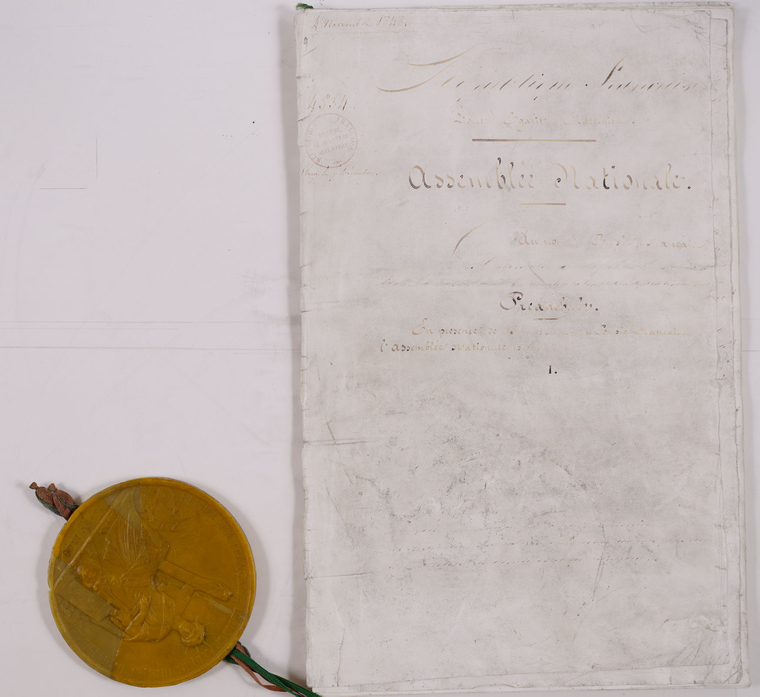On 4 November 1848, the infant Second Republic was given a founding text, drafted by a new parliament with 900 deputies elected through male universal suffrage.
The abdication of King Louis-Philippe, on 24 February 1848, brought about the inauguration of a provisional compromise government, with a political scope ranging from moderate republicans to socialists and liberals, such as the romantic poet Alphonse de Lamartine.
Their first achievement was symbolic: Lamartine obtained the proclamation of the Republic and raised the tricolour flag on the balcony of Hôtel de Ville. Next was the abolition of slavery and the death penalty for political crimes, the repeal of the censorship act of 1835, the creation of new social measures for workers, and the establishment of male universal suffrage by decree on 5 March 1848.
All French men aged 21 or over could take part in the elections of the 900 deputies responsible for drawing up the constitution. On 23 and 24 April 1848, 84% of registered voters went to the polling places.
Around 500 liberal republicans close to the provisional government were elected, including Lamartine; there were 150 radical and socialist republicans, including Victor Hugo, and 250 monarchists.
The resulting constitution was a mix of different constitutional traditions, which combined the ideas of 1789 with a more conservative spirit: the republican principles of “Liberty, Equality and Fraternity” were then based on “Family, Work, Ownership and Order”. The text ensured the social gains of the provisional government would be lasting, affirmed the right to education, ownership, and freedom of expression and of association. Victor Hugo, despite his great eloquence, did not succeed in having the abolition of the death penalty included.
Highly inspired by the American model, the Constitution provided for the executive power to be entrusted to a President of the Republic elected for four years, and who could not be immediately re-elected.
The French people chose Louis Napoleon Bonaparte – nephew of Napoleon I –as their leader. Elected head of State in December 1848, with 75% of the votes, he formed a conservative government. But the first president of the Second Republic would also be the last.
The Constitution of 1848 was repealed three years later with the coup d’État of Louis Napoleon Bonaparte and the promulgation of the Constitution of 1852, which gave rise to the Second Empire.

Updated : 15 December 2022